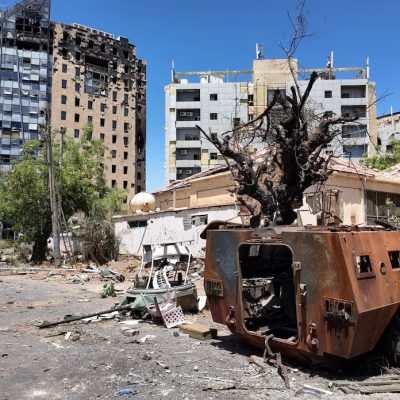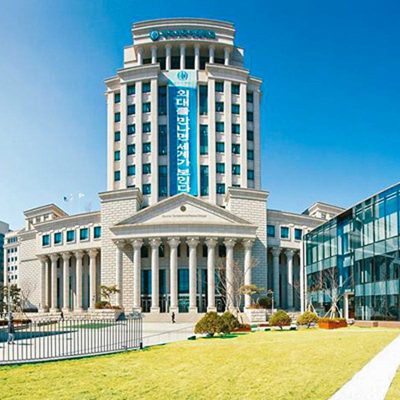Political and security phases Sinai has undergone
the Peace Treaty between Egypt and Israel that has been concluded in Camp David in the United States of America, about four decades ago and the implementation of which is overseen by multinational forces, stipulates the presence of Egyptian forces in zones A and B of. the size of these troops does not exceed 21 thousand fighters, equivalent of two infantry divisions supported by the necessary forces and weapons of all branches. Zone A is manned with joint and combat security forces. Zone B is manned with border Guards troops and police Central security forces man Zone C.
Over the past decades, the Sinai Peninsula has been severely neglected by the Egyptian political leadership. Sinai has suffered from several international crimes that has begun with the smuggling and infiltration of white slaves that resulting from the collapse of the Soviet Union about three decades ago. Such a crime has been accompanied with the cultivation and smuggling of narcotics and smuggling of all kinds weapons. Terrorism in Sinai is not new as it has been going on for more than two decades. The activities of terrorist Group “Ansar al-Maqdis Organization” has appeared in Sinai in and before 2011 when this group has been targeting the gas pipelines from Egypt to Israel. Over the past six years, terrorism has increased in Sinai in response to the June 30th Revolution. During those years, elements of the terrorist Wilayet Sinaa (Sinai State) armed group, formerly Ansar Al-Qods (supporters of Jerusalem), and Agnad Misr organization (soldiers of Egypt), which is recognized internationally as a terrorist group have been able to carry out their operations targeting the army and police forces responsible for enforcing the law in Sinai, as well as targeting some civilians from tribes opposing to them.
Armed Elements with special objectives and different ideology in Sinai
I envision that the Armed Elements in Sinai have a general strategic objective
“Terrorism in Sinai aims at establishing a strategic base for Islamic Caliphate as an extension to its main base in Iraq and the Levant and that would stretch to the west to cover Libya and western Arab states including Mauritania and the Saharan States. Thus, spreading in all geographic directions in the Near East and North and East Africa and eventually increasing the severity of the threats and the impacts on Europe, Africa and Asia. All this can be achieved through the imposition of full sovereignty over Sinai or its main cities and isolate them. Concurrently terrorism will be working to change the Egyptian identity therein from (nationalistic) to (ideological). When this goal is attained, it will lead to the failure and overthrow of the Egyptian state which enjoys the most important geo-strategic location regionally and strategic importance internationally, and at that point, the declaration of the Islamic State.”
The internationally targeted political situation
In connection with this objective and the idea of achieving it, the armed elements in Sinai initiate their operations through a certain type of conflict which is termed “low intensity conflict”. It usually occurs between minorities of a state and the government army of that state in a form of a so-called “civil war”. In the case of Sinai , the aim of these elements is to seize and declare control on a village or city in the Governorate of Northern Sinai and isolate that village or city from the Egyptian state; thus, declaring the sovereignty of the armed groups over that spot, similar to what has happened (for example) in Deir al-Zour, Mosul and Sirte in Syria, Iraq and Libya.
If this happens, it proves the none control of the legitimate government of the Egyptian state on that city. It shows practically and explicitly to the international community and its organizations the most important two indicators of the failed state in Egypt: the failure of the Egyptian State to impose its sovereignty over all its territories and its lack of monopoly on the use of force therein .
Sequence of events
following June 2013, armed groups gathered in the streets of Al-Arish ( the largest city in North Sinai and its capital) and announced the establishment of a “War Council” against the Egyptian State protesting against the movement of the army in response to the demands of the people of Egypt to overthrow the former President Mohamed Morsy. Later on, anti-aircraft missiles “SAM-7”, “Kornet” anti-tank, rocket launchers and ammunition and various weapons have been found. Foreign fighters have joined in (known from the subsequent and recurrent security campaigns). These armed organizations have exploited the terrorist strikes in the Delta and the Valley, including the burning of and destruction of 62 churches on one day following the dismantling of Raba’a Sit-in on August 14, 2013, in extending its control of areas in the center and North Sinai, While South Sinai has remained relatively calm.
The map of terrorist activities has varied to include bombings and strikes that have paralyzed movements in the major cities of North Sinai’s main cities (Al-Arish, Sheikh Zuwaid, Rafah, Bir al-Abd), with successful attacks on armed forces across the coast and attempts to prevent electoral procedures (the assassination of judges at the Swiss Inn Hotel in Al-Arish) and other terrorist activities.
Welayat Sina’a Organization (Sinai State) has attempted to seize by force large cities in Northern Sinai through several land and coastal operations near Al-Arish with the aim of declaring the establishment of an Islamic Principality to show the failure of the Egyptian state following the same military tactics that ISIS has implemented with great success in several cities in other countries.
Terrorist elements have developed their tactics in Sinai into guerilla warfare (carrying out raids, ambushes, attempts to seize strong points, weapons and equipment); which indicates a higher level of planning.
the terrorist elements have relatively changed their tactics in Sinai
for the second time. They have been transformed into fast and small scale
operations; such as using snipers to hunt soldiers or try to targeting forces
during movement on the roads. They have tried to cover up their successive
losses and resorted to other plans; such as setting up small checkpoints (for
no more than a few minutes) at night in some villages near Rafah and
Al-Arish, distributing leaflets warning citizens against smoking cigarettes or
cooperating with the armed forces and broadcasting short videos
,according to the period of the task, to promote themselves to their
affiliates and confirm their presence on the ground despite of the strikes they
receive.
Armed terrorist attacks have recessed sharply. After failing to capture cities, terrorist organizations’ attempts to seize any fixed army or police checkpoints in 2015 and 2016 have failed and they couldn’t base themselves at any security point. With the fall of the most important armed terrorist group in Sinai located in Jabal Al-Halal by the end of February 2017, these armed elements have been weakened significantly. Welayat Sina’a Organization (Sinai State) has resorted to implementing an alternative plan, indicating the severity of its weakness. Such plan is built on sectarian strife and the internationalization of the idea of Copts’ vulnerability and targeting. This terrorist group has launched intimidation campaigns against the population and assassinated Copts in Al-Arish, claiming to “empty the city of the infidels”. Indeed, Al-Arish has witnessed a wave of displacement in fear of terrorism.
Egyptian military response and resilience
n the other hand, the Egyptian law enforcement troops in Sinai have moved rapidly and augmented their strength throughout North and Central Sinai; securing the entire coastal region and ensuring that there are no armed elements along the North Sinai coast (from Rafah of Egypt to Port Said). Attempts to attack cities or impose geographical control over any populated area have been defeated (the most serious of which was the attempt to capture Sheikh Zuwaid in mid-2015 which was crushed and the terrorist organization suffered heavy losses and admitted defeat).
the operations of the law enforcement troops (army and police) have been functioning with the objective of eradicating (Welayet Sinaa) in North Sinai; specifically, in the villages (Al-Mokata’a – Al-Barth – Mahdia, south of Rafah). Clashes have escalated between the organization and the tribesmen of Sawarka, Trabeen, Althah and others in the Sinai. That has been an announcement of their intent to confront terrorism; in what the tribes have called the “Sinai Awakening,” similar to the tribal groups formed by the United States in Iraq to counter Al-Qaeda. The response of Welayat Sinaa has been the implementation of a new type of operations in recent periods; i.e the killing of hundreds of worshipers in the Al-Arish Mosque in November 2017. The mosque was full of members of these tribes. In addition, the terrorist group has performed many executions of other people from those tribes in Al-Arish
From all the above mentioned events and with the spread of terrorism in Sinai, the item concerning the size of forces stipulated by the Camp David Peace Accord has been bypassed upon the approval of the Israelis and the Egyptians and the knowledge of the International Emergency Forces. the size of Egyptian forces in Sinai has mounted to 60000 troops encompassing joint forces, special forces and support branches. Upon a case by case separate agreement between the two sides, the Egyptian Air Force will be deployed to conduct concentrated attacks on terrorist congregations. There is also information cooperation between Egypt and Israel in countering terrorism in Sinai as explained the his excellency Mr. Sameh Shoukry, the Minister of Foreign Affairs of Egypt during the 2018 Munich Security Conference. There has been no participation of Israeli forces or any other forces to confront the armed elements in Sinai. the Egyptian armed forces and police are determined to confront those elements in the Sinai on their own.
This is clearly reflected in launching “ Operation Sinai 2018” as of February 9, 2018 upon a mandate by the Egyptian political leadership. The operation has started in the form of a comprehensive military campaign with the specific task of “countering terrorism and restoring security in North and Central Sinai and other areas of the Egyptian Delta and the desert hinterland west of the Nile Valley with the aim of tightening control over the external ports”.
The Egyptian Armed Forces has prepared an integrated plan to be implemented through several phases in all areas of the mission. then the EAF has prepared the theater and enabled the deployment of large forces from all services to ensure the achievement of its objective swiftly and decisively. coasts and major roads have been secured. The operation is supported with gathering and analysis of information on the highest level. Reconnaissance has been conducted all over North Sinai with all available means until the Egyptian forces has already begun to deal with terrorism and carry out its missions fully focused.
The most important measures to deal militarily with the terrorist elements in Sinai are:
- continue to secure land and coastal borders.
- confront with force all attempts to penetrate the international borders,
- respect the sovereignty of all countries geographically bordering with Egypt
- coordinate with bordering nations with the aim of controlling and securing common borders exchange information with bordering nations on the presence and movement of terrorist elements
- continue the establishment of the buffer zone on the border strip with Gaza and compensating those affected by the relevant authorities in the state.
MG (Ret). Sayed Ghoneim
Fellow, Nasser Higher Military Academy
Chairman, Institute For Global Security & Defense Affairs (IGSDA)
www.igsda.org





